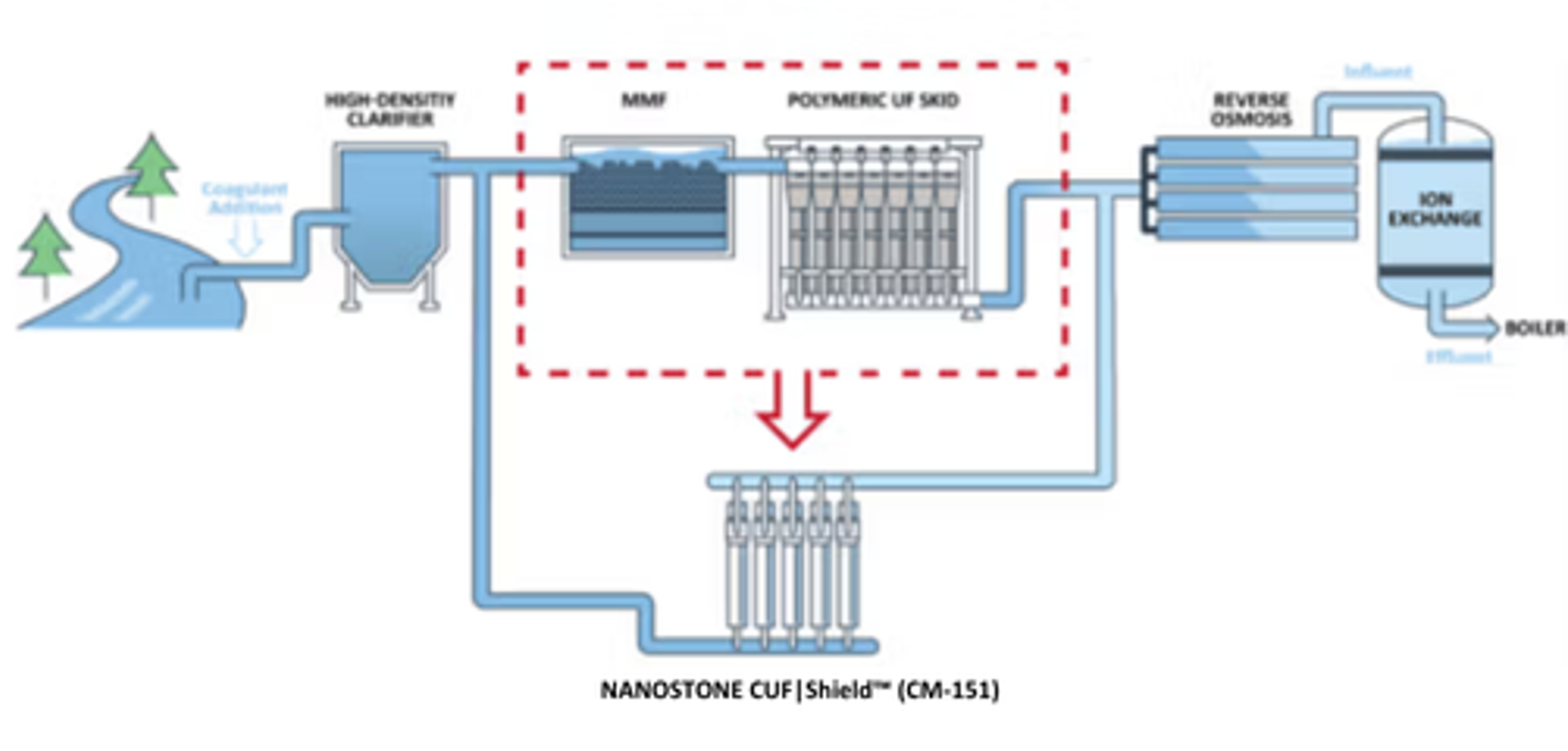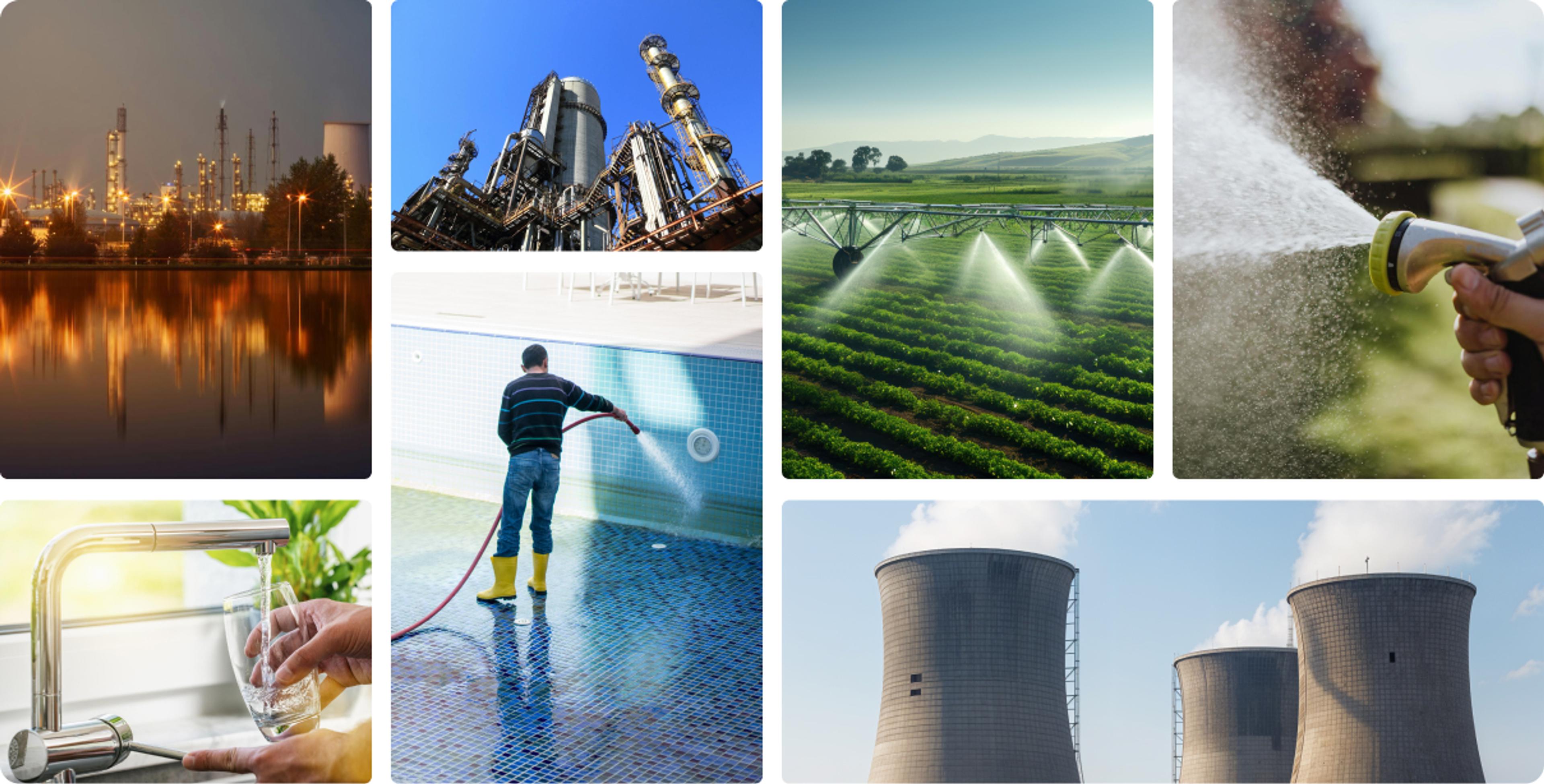Cooling Tower Blowdown - Nanostone Ceramic Membranes
Application
Cooling Tower Blowdown
Advanced Ceramic Membrane Filtration for Cooling Tower Blowdown Treatment

Why Nanostone for Cooling Tower Blowdown?
Approach & Benefits
Our Ceramic Ultrafiltration (CUF) Membranes offer an innovative solution to the challenges of treating CTBD, providing several key benefits:

- Simplified Treatment Scheme: Our solution is coupled with a softening clarifier, which reduces complexity compared to alternative approaches that typically use multimedia filtration and polymeric UF. This integration enhances efficiency, simplifies the process and reduces the footprint of the treatment system.
- Long-Lifetime Physical Barrier: The softening clarifier combined with the ceramic UF solution eliminates abrasive particles that would otherwise disrupt downstream processes such as RO.
- Robust Operation: Our ceramic membrane technology effectively handles the variability of cooling tower blowdown wastewater, ensuring consistent performance and protecting reverse osmosis (RO) systems by reducing fouling and extending membrane lifespan.
- Increased Recovery: Our system achieves a higher recovery rate than competing schemes, leading to increased uptime and lower overall operational expenses (OPEX).
Common Questions
About Our Cooling Tower Blowdown Application
How does Nanostone's technology help treat cooling tower blowdown?
How does Nanostone's technology help treat cooling tower blowdown?
Nanostone's technology treats cooling tower blowdown using a combination of ceramic ultrafiltration membranes and softening clarifiers. This approach simplifies the treatment process, improves efficiency, and reduces system footprint compared to conventional methods. The ceramic membranes serve as a durable physical barrier, removing abrasive particles and preventing damage to downstream systems like RO. Additionally, the system delivers higher recovery rates, increasing operational uptime while reducing costs.
Does the system require specific integration with a power plant's existing equipment?
Does the system require specific integration with a power plant's existing equipment?
Nanostone's membrane system can be integrated into existing power plant equipment with minimal modifications. Its modular design and compatibility with softening clarifiers simplify integration compared to traditional approaches. The system seamlessly incorporates into existing infrastructure, improving water treatment efficiency without requiring major changes to current plant configurations. This adaptability reduces installation complexity and helps optimize overall system performance.
Sweetspot Applications
Explore Nanostone's advanced water treatment applications

Innovative ceramic membrane solutions for Cleaner, More Sustainable Water
Nanostone's ceramic membranes enhance RO system performance by optimizing the pretreatment process. They efficiently remove suspended solids and pollutants, ensuring better water quality and reducing fouling risks. Ideal for both municipal and industrial applications, these membranes improve efficiency, sustainability, and cost-effectiveness in water treatment.